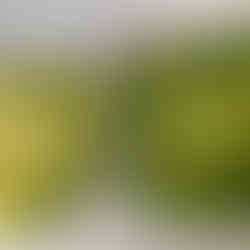Zilwaukee Junior High School – A c. 1972 Recipe From Seventh Grade Home Economics
- kellison71
- Mar 31, 2024
- 4 min read

This week’s recipe is a recreation of a simple, child-friendly recipe learned in a c. 1972 Home Economics class at Zilwaukee Junior High School. Where Home Economics was offered as part of a three-part elective, consisting of Wood Shop, Guidance and Home Economics. Classes were coed.

At Zilwaukee, Margery Bartlett taught Home Economics. Her class focused on fundamental skills of cooking and sewing – they were taught with patience and precision. Born in Lansing in 1921, Margery married Laverne Bartlett of Saginaw in 1944. When she passed away in 1986, her obituary noted that she had taught in the “Saginaw Public Schools for the past six years.” Before that, during her career at Zilwaukee Junior High School, she taught Language, Physical Education and, of course, Home Economics.
By 1972, Zilwaukee School was part of the Saginaw Public School District. The building housing the school was constructed in stages, chronicling the development of the school. The oldest portion dated to 1925.

A history of the Zilwaukee School District published at the time of the community’s centennial celebration in 1954 recounts its history:
“Very early the mill settlements tried to provide for the education of their children. The Zilwaukee area was incorporated successively into several school districts. In 1852 it was part of District No. 5 of Saginaw and Hampton Townships. The first election of officers for a school in Zilwaukee was held on February 28, 1852. Otis Shepard was elected the first School Moderator. He was succeeded by Daniel Johnson himself on May 27, 1854. In this year the title of the district was changed to ‘School District No. 1 of Zilwaukee and Saginaw Townships.’ The first teacher mentioned in the original school inspection record was Miss Celia Ann Hawkins, who was hired on May 31, 1854.
ON SEPTEMBER 27, 1855, the District Board voted the following taxes for the previous school year: ‘$58.00 for School support; $20.00 for the purchase of globes, etc.; $10.00 for the School director's salary; and $3,000.00 to build a new school house.’
District No. 1 of Zilwaukee Township embracing the entire township was formed in 1863. Later two additional districts were established: No. 2 in 1869 for the New York Works area, and No. 3 in 1879 for the territory East of the river (later annexed to Buena Vista Township.) In 1880, these three districts counted 503 children of school age, of whom 374 were reported in attendance. The school houses were frame buildings, with a total value of $8,656, and were conducted by 7 teachers. Districts 1 and 2 were consolidated into one district to be known as Fractional District No. 1 in 1898, because ‘District No. I is not self-supporting to maintain a School.’
The present brick school building at the head of Johnson Street was built in 1925 at a cost of $75,000. A four-room addition was made in 1938 for $4100. Today the school accommodates 326 students from Kindergarten through 9th grade.”1
In 1954, the 1925 building was expanded yet again with a new classroom wing and gymnasium. In 1961 a new Junior High School addition was completed.
Typical of many smaller, community school districts in Saginaw County, Zilwaukee offered Kindergarten through ninth grade – after ninth grade students attended High School in another district – the City of Saginaw Schools. By the late 1950s, state legislation was encouraging all districts to offer a full program from kindergarten through 12th grade, and by 1964 all districts were required to offer K – 12 programs. In June 1966, voters in Zilwaukee and adjoining Kochville township merged with the City of Saginaw. In the 1970s, Zilwaukee’s Junior High classes were transferred to North School.
1. Eugene A. Forbes, Zilwaukee Where the Woods Come to the Water, [Zilwaukee, MI.]: [Zilwaukee Centennial Committee], [1954]
The Recipe: Bunny Salad or Mock-Rabbit on a Bed of Lettuce

This is a recreation of Mrs. Bartlett’s recipe derived from memory - with some prompting from online sources – perhaps more from online sources than memory.

Bib or other lettuce leaves, washed and thoroughly dried
4 canned pear halves- chilled
8 almond slices
8 whole cloves (While the CTK staff remembers using whole cloves, most online sources suggest raisin pieces – an easier, more edible choice.)
4 red hot candies
4 whole marshmallows (Online sources suggest using whipped cream or cottage cheese to create a more robust tail.)
Assembly:
Create a bed of lettuce on each plate – making certain that the center of each plate contains a flat area appropriate for a nesting mock-rabbit. Place a half pear on each plate cut side down.
Now comes the fun part: Assuming the narrow part of the pear is the head of the rabbit, use two almonds to create ears, one red hot candy to create a nose* and two cloves for eyes. Position the marshmallow at the rear of the “mock bunny” to act a fluffy tail. And that is it. And this seems much easier than it was in 1972 – there were many more distractions in a junior high school Home Economics class.
Of course, following the lead of several online sources, you could garnish your creation with mini-carrots or even edible flowers. And this leads to our spoiler alert: next week we focus on flowers – or should we say rabbit food.
*Note:
It is recommended you add the nose – we mean red hot - immediately before serving. Otherwise, the red hot will run and make your rabbit blush. And a blushing bunny is an altogether different recipe incorporating cheese and tomatoes.





















